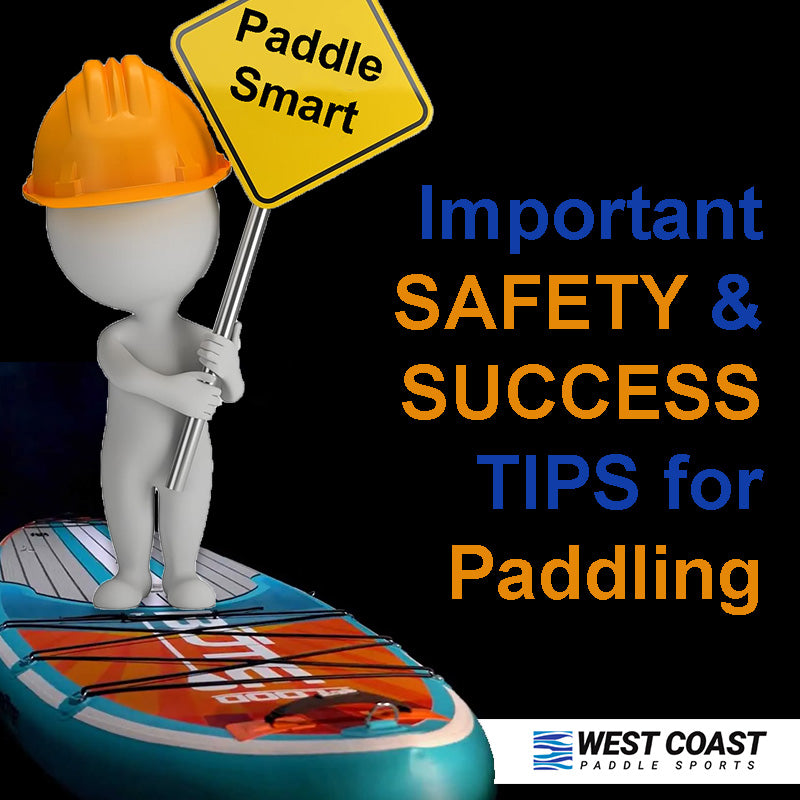Sometimes as we paddle we learn and improve our sills. Learning tips along the way that make our experience more safe and fun. Below is a collection of tips we have shared with our paddlers and learned ourselves over the years (sometime the hard way).
Wear a PFD (and know how to use it!)
Kind of like wearing a helmet when skating or biking, there is no debate that a PFD can be useful and even save your life. But for whatever reason, paddlers don't always value this important piece of safety equipment. And others don't even know it is often a requirement in bays and harbors and you can be cited if you don't carry it with you. But even more important, is actually wearing the pfd and knowing how to put it on when the time is right. Take the time to get familiar with how the PFD fits you, where it needs to be snug and tight so as not to come off. And if you sport an inflateable PFD, know how these should be activated and worn. And make sure to regularly check your CO2 cartridge. Nothing worse than going to pull the cord and not having anything happen!

Check out PFDs for purchase here.
Wear a Leash
While a PFD is important, we would feel strongly that a leash is just as important for safety of you and others. Imagine falling off your board, and having it drift away in the wind. Or shoot of into a friend and smacking them in the shin, or worse yet, they are swimming and the board hits them in their head. The board can be your best friend as it floats. And can provide you the best way to stay above water. But it is also something that can fly into another person if we fall and kick it away. A leash can make sure your board is near you at all times. Even in the wind where it could drift away in a matter of seconds. Fortunately leashes come in various lengths and styles to find one that works for you and your board; doesn't get stuck underfoot, and also will last the life of your board with quality components.
A leash can also be a helpful way to pull another paddleboard and paddler out of danger if needed.

Paddle in correct areas and directions
Just like driving on the road in the USA, there is a right of way and proper navigation on the water too. And while boaters are required to get proper training and certifications, us paddlers don't always take the time to learn these basic formalities that actually keep us safe! Here are a few:
- Paddle on the right side of waterways (like a road in your car).
- Sailboats get right-of-way. Any wind-powered craft get priority over paddlers. So if you see a sail boat coming your way (big or small)...move out of their path.
- Stay out of swim zones.
- Beware of jet ski and waterski areas. They are moving fast and are in designated areas. Best to avoid if you can. And make sure you pick your course and time it well.
- Watch out for fishing lines along rocks and jettys.

Keep your weight centered on the board
Too far back and you are creating drag. Too far up and you are pushing water. Right in the middle? Juuuuust right! Find the sweet spot on your board, and even have a friend watch as you paddle to see your position and give feedback. No need to work harder than you have to. Also, make sure you are centered laterlaly (left to right) as well. Too much imbalance can lead to having to off-set your tendency to turn on the heavier side of the board. And as a result, more strokes on one side than the other.

Hold your paddle correctly!!!
We'd like to think everyone is taught the correct way when they rent a board or borrow one from a friend. But far too often we see paddlers holding their paddle backwards. Don't be that person on the water who essentially has a "I am new to this sport" sign above their head. The paddle should be held blade angle forward. We can explain the science behind it (creating lift, extending positive angle, reducing drag and maximizing glide) until we are blue in the face. But something about the paddle angle being backwards 'looks' to many like it will net a better catch and pull. But trust us, you want the angle pointed forward. Don't believe us? Do a speed test in each direction. Or better yet, look at pictures of the pros who race for a living. Which way do they hold their paddle?

Additional Important Safety Tips
- Always be on the lookup of boaters. They don't always pay attention to us, or expect us to be able to navigate as fast as them.
- Help other paddlers when you see them on the water. We were all beginners at one point right?
- You represent the entire paddle community when you are on the water. Know the rules. And respect them. Or else you can make us all look bad.




